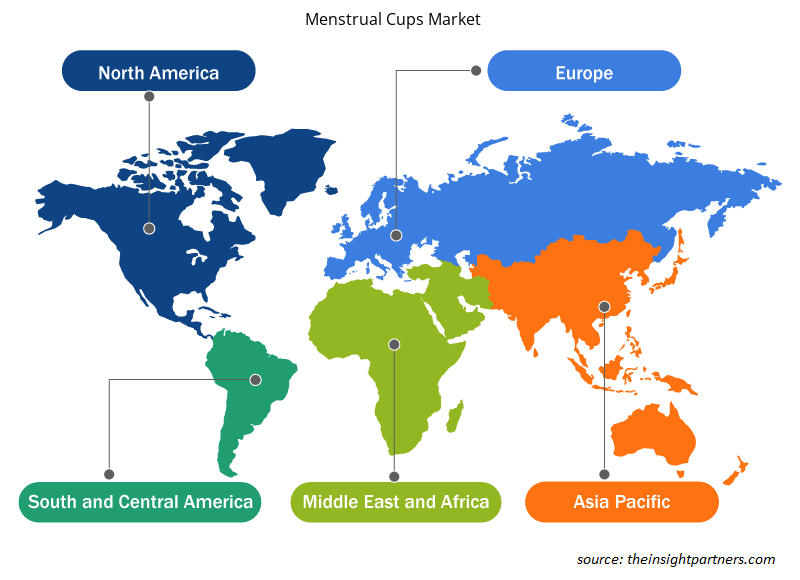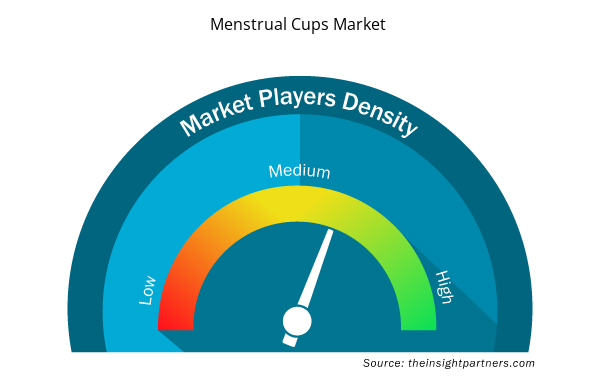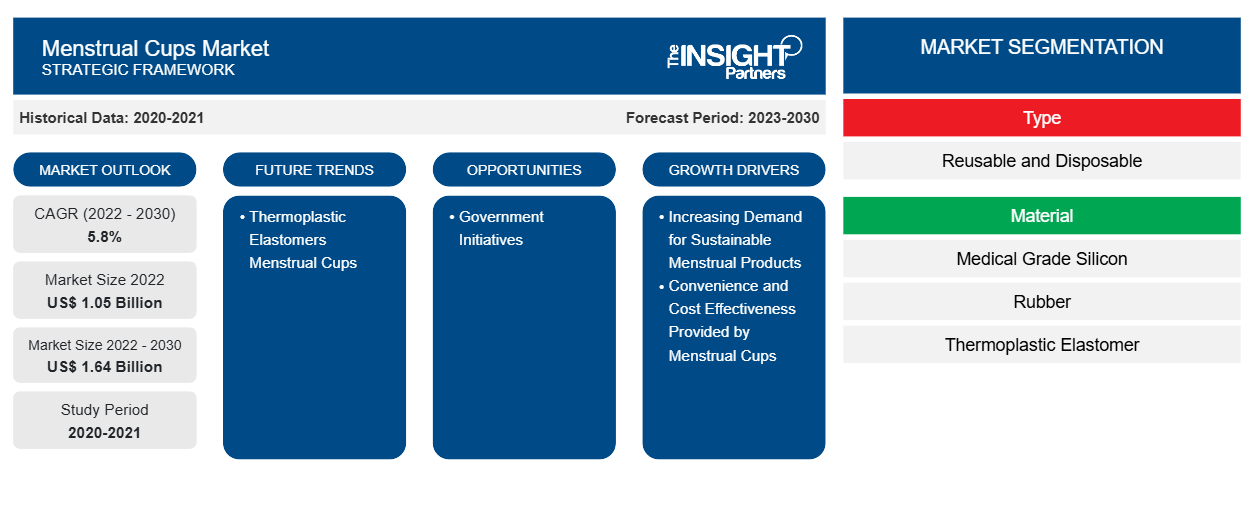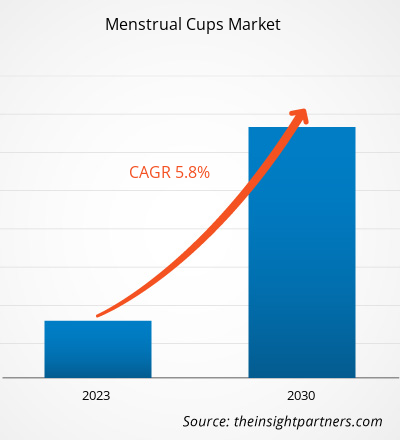[연구보고서] 월경컵 시장 규모는 2022년에 1,050.81백만 달러로 평가되었으며, 2030년까지 1,644.06백만 달러에 도달할 것으로 예상되며, 2022년에서 2030년까지 연평균 성장률 5.8%를 기록할 것으로 추산됩니다.
시장 통찰력 및 분석가 관점:
월경컵은 월경 중 여성 위생을 위해 설계된 재사용 가능한 종 모양의 기구입니다. 일반적으로 의료용 실리콘이나 고무로 만들어진 이 컵은 전통적인 탐폰이나 패드처럼 월경액을 흡수하는 대신 질에 삽입하여 월경액을 수집합니다. 누출을 방지하기 위한 봉인을 만들고 비우기 전까지 최대 12시간 동안 착용할 수 있어 일회용 제품에 대한 지속 가능하고 비용 효율적인 대안을 제공합니다. 월경컵은 전통적인 월경 위생 옵션에 비해 환경적 이점과 장기적인 비용 절감으로 인해 인기를 얻고 있습니다.
성장 동인 및 과제:
지속 가능한 생리용품에 대한 수요가 급증하는 것은 생리컵 시장을 이끄는 주요 원동력입니다. 최근 몇 년 동안 전 세계적으로 지속 가능성에 대한 전환이 있었으며, 소비자들은 기존의 일회용 생리용품의 환경적 영향에 대해 점점 더 인식하고 있습니다. 기존의 패드와 탐폰은 플라스틱 폐기물에 상당한 기여를 하며, 이를 생산하는 데는 자원과 에너지가 소모됩니다. 매년 평균적인 여성은 약 150kg의 비분해성 폐기물을 버립니다. 인도에서만 약 1억 2,100만 명의 여성과 소녀가 매달 평균 8개의 일회용 및 비분해성 패드를 사용하여 매달 10억 2,100만 개의 패드 폐기물, 매년 123억 개의 패드 폐기물, 연간 113,000톤의 생리 폐기물을 생성합니다. 개인이 재사용 가능한 특성으로 인해 친환경적 대안을 찾으면서 생리컵이 주요 선택으로 부상했습니다. 이러한 높아진 환경 의식으로 인해 소비자는 생태적 발자국을 최소화하는 제품을 선택하게 되어 생리컵에 대한 수요가 증가합니다.
지속 가능한 생리용품에 대한 수요 증가는 여성의 건강과 웰빙을 옹호하는 보다 광범위한 운동과 긴밀히 연관되어 있습니다. 소비자들은 환경에 좋을 뿐만 아니라 건강에 안전하고 유익한 제품을 점점 더 우선시하고 있습니다. 일반적으로 의료용 실리콘, 고무 또는 열가소성 엘라스토머로 만든 생리컵은 안전하고 위생적인 것으로 간주되어 기존 제품과 관련된 자극 및 알레르기 반응의 위험을 줄입니다. 생리컵을 환경적 지속 가능성과 여성 건강과 일치시키는 것이 매력에 기여하여 인기가 상승하는 원동력이 됩니다.
귀하의 요구 사항에 맞게 이 보고서를 사용자 정의하세요
이 보고서의 일부 또는 국가 수준 분석, Excel 데이터 팩을 포함하여 모든 보고서에 대한 사용자 정의를 무료로 받을 수 있으며 신생 기업 및 대학을 위한 훌륭한 혜택과 할인 혜택을 이용할 수 있습니다.
- 이 보고서의 주요 시장 동향을 알아보세요.이 무료 샘플에는 시장 동향부터 추정 및 예측까지 다양한 데이터 분석이 포함됩니다.
월경용품의 지속 가능성에 대한 요구는 일회용 옵션의 환경적 영향에 대한 인식을 높이기 위한 다양한 옹호 단체, NGO 및 정부 이니셔티브에 의해 확대되었습니다. 지속 가능한 월경을 홍보하는 캠페인은 월경컵과 같은 재사용 가능한 대안의 이점에 대해 대중을 교육하는 데 중요했습니다. 지속 가능한 월경 관행에 대한 가시성과 지지가 커지면서 소비자 태도가 긍정적으로 바뀌어 월경컵에 대한 수용과 채택이 더욱 확대되었습니다.
지속 가능한 생리용품에 대한 수요는 또한 친환경적 선택을 우선시하는 젊은 세대 소비자에 의해 촉진됩니다. 특히 밀레니얼 세대와 Z세대는 개인 관리를 포함한 다양한 산업에서 지속 가능하고 윤리적인 제품에 대한 수요를 주도합니다. 이러한 인구통계의 인식과 선호도는 시장 동향에 영향을 미치며, 지속 가능하고 미래 지향적인 옵션인 생리컵은 그들의 가치와 잘 맞습니다. 이 인구통계의 구매력이 계속 증가함에 따라 생리컵에 대한 수요도 증가하여 시장에서 선도적인 지속 가능한 생리용품으로서의 입지를 강화할 것입니다.
그러나 소비자의 인식과 무지는 월경컵 시장에서 상당한 제약을 나타내며, 전 세계적으로 채택률에 영향을 미칩니다. 많은 개인이 포괄적인 교육 및 인식 캠페인이 부족하여 월경컵의 이점에 대해 알지 못합니다. 비용 효율성, 환경 영향 감소, 착용 시간 연장과 같은 제품과 이점에 대한 익숙하지 않은 점은 잠재적 사용자가 기존 월경 제품에서 전환하기를 꺼리는 데 기여합니다. 이러한 지식 부족은 오해와 억제로 이어져 월경컵을 실행 가능하고 실용적인 대안으로 더 광범위하게 수용하는 것을 방해할 수 있습니다.
월경컵을 사용하는 데 주저하는 것은 종종 삽입과 제거의 어려움에 대한 우려에서 비롯됩니다. 여러 소비자는 월경컵 사용과 관련된 학습 곡선을 장벽으로 여기며, 자신이 가지고 있지 않을 수 있는 수준의 기술이나 편안함이 필요하다고 생각합니다. 월경컵의 간단한 사용과 잠재적인 건강상의 이점에 대한 이해 부족이 이러한 우려에 기여합니다. 이러한 선입견과 오해를 극복하려면 월경컵의 사용 용이성, 편안함 및 긍정적인 환경적 영향을 강조하기 위한 타깃이 잡힌 교육적 노력이 필요합니다. 이러한 우려를 해결하고 인식을 촉진함으로써 시장은 신화를 해소하고 잠재적 사용자 사이에서 월경컵에 대한 더 긍정적인 인식을 장려하기 위해 노력할 수 있습니다.
보고서 세분화 및 범위:
글로벌 월경컵 시장은 유형, 소재, 유통 채널 및 지리적 위치를 기준으로 세분화됩니다. 유형을 기준으로 시장은 재사용 가능 및 일회용으로 분류됩니다. 소재별로 시장은 의료용 실리콘, 고무 및 열가소성 엘라스토머로 분류됩니다. 유통 채널별로 시장은 슈퍼마켓 및 하이퍼마켓, 전문점, 온라인 소매점 및 기타로 분류됩니다. 지리적 위치를 기준으로 글로벌 월경컵 시장은 북미, 유럽, 아시아 태평양, 중동 및 아프리카, 남미 및 중미로 광범위하게 세분화됩니다.
세그먼트 분석:
월경컵 시장은 유형에 따라 재사용 가능 및 일회용으로 분류됩니다. 재사용 가능 부문은 2022~2030년 동안 가장 높은 CAGR을 기록할 것으로 예상됩니다. 재사용 가능 월경컵은 월경 위생에 있어 지속 가능하고 비용 효율적인 혁명을 나타냅니다. 일반적으로 의료용 실리콘, 고무 또는 열가소성 엘라스토머로 제작된 이 종 모양의 컵은 전통적인 탐폰이나 패드처럼 월경을 흡수하는 대신 질에 삽입하여 월경 흐름을 수집합니다. 소재의 유연성과 부드러움은 편안함과 사용 용이성을 보장하여 사용자의 해부학적 구조에 적응합니다. 재사용 가능 월경컵은 최대 12시간 동안 착용할 수 있어 누출 없는 보호 기능을 제공하고 사용자가 생리 기간을 관리하는 데 더 큰 유연성을 제공합니다. 가장 중요한 장점 중 하나는 재사용이 가능하기 때문에 환경에 미치는 영향입니다. 컵은 생성되는 월경 폐기물의 양을 크게 줄여 친환경적인 월경 관리 일상에 기여합니다. 또한, 장기적인 비용 절감과 일회용 제품을 정기적으로 구매할 필요가 없다는 편의성 덕분에 재사용 가능한 월경컵은 월경 위생에 대한 지속 가능하고 실용적인 대안을 찾는 사용자들에게 점점 더 인기 있는 선택이 되고 있습니다.
지역 분석:
월경컵 시장은 북미, 유럽, 아시아 태평양, 남미 및 중미, 중동 및 아프리카의 5개 주요 지역으로 구분됩니다. 북미는 2022년 글로벌 월경컵 시장을 장악했으며, 이 지역의 시장 규모는 3억 9,541만 달러였습니다. 유럽은 두 번째로 큰 기여자로, 글로벌 시장의 30% 이상을 차지합니다. 아시아 태평양 지역은 2022~2030년 동안 5% 이상의 상당한 CAGR을 기록할 것으로 예상됩니다. 아시아 태평양 지역에서 월경컵에 대한 수요가 급증한 것은 문화적 변화 증가, 인식 증가, 여성 건강의 중요성 증가 등 다양한 요인에 기인할 수 있습니다. 많은 아시아 국가에서 월경을 둘러싼 금기를 깨려는 움직임이 증가하고 있습니다.
COVID-19 팬데믹 영향:
COVID-19 팬데믹은 제조 시설 폐쇄, 노동력 부족, 공급망 붕괴, 재정 불안정으로 인해 처음에 글로벌 월경컵 시장을 방해했습니다. COVID-19 발병으로 인한 경기 침체로 인해 다양한 산업의 운영이 중단되면서 월경컵 공급이 제한되었습니다. 게다가 다양한 매장이 문을 닫아 월경컵 판매가 제한되었습니다. 그럼에도 불구하고 2021년에 다양한 국가에서 이전에 부과된 제한이 철회되면서 사업이 성장하기 시작했습니다. 게다가 다양한 국가 정부가 COVID-19 백신 접종을 시행하면서 상황이 완화되어 전 세계적으로 사업 활동이 증가했습니다. 월경컵 시장을 포함한 여러 시장은 봉쇄와 이동 제한이 완화된 후 성장을 보고했습니다.
월경컵 시장 지역 통찰력
Insight Partners의 분석가들은 예측 기간 동안 월경컵 시장에 영향을 미치는 지역적 추세와 요인을 철저히 설명했습니다. 이 섹션에서는 북미, 유럽, 아시아 태평양, 중동 및 아프리카, 남미 및 중미의 월경컵 시장 세그먼트와 지리에 대해서도 설명합니다.

- 월경컵 시장의 지역별 데이터 얻기
월경컵 시장 보고서 범위
| 보고서 속성 | 세부 |
|---|---|
| 2022년 시장 규모 | 10억 5천만 달러 |
| 2030년까지 시장 규모 | 16억 4천만 달러 |
| 글로벌 CAGR (2022-2030) | 5.8% |
| 역사적 데이터 | 2020-2021 |
| 예측 기간 | 2023-2030 |
| 다루는 세그먼트 | 유형별로
|
| 포함된 지역 및 국가 | 북아메리카
|
| 시장 선도 기업 및 주요 회사 프로필 |
|
월경컵 시장 참여자 밀도: 비즈니스 역학에 미치는 영향 이해
월경컵 시장은 소비자 선호도의 변화, 기술 발전, 제품의 이점에 대한 인식 증가와 같은 요인으로 인해 최종 사용자 수요가 증가함에 따라 빠르게 성장하고 있습니다. 수요가 증가함에 따라 기업은 제품을 확장하고, 소비자의 요구를 충족하기 위해 혁신하고, 새로운 트렌드를 활용하여 시장 성장을 더욱 촉진하고 있습니다.
시장 참여자 밀도는 특정 시장이나 산업 내에서 운영되는 회사나 기업의 분포를 말합니다. 주어진 시장 공간에 얼마나 많은 경쟁자(시장 참여자)가 존재하는지 그 규모나 전체 시장 가치에 비해 나타냅니다.
월경컵 시장에서 활동하는 주요 회사는 다음과 같습니다.
- 닉시트
- 루넷 글로벌
- 레나 컵 유한회사
- 디바 인터내셔널 주식회사
- 살트
면책 조항 : 위에 나열된 회사는 어떤 특별한 순서에 따라 순위가 매겨지지 않았습니다.

- 월경컵 시장 주요 업체 개요 알아보기
경쟁 환경 및 주요 회사:
Nixit, Lunette Global, Lena Cup LLC, Diva International Inc., Saalt, Pixie Cup, June Cup, Cora, The Flex Company, Blossom Cup은 글로벌 월경컵 시장에서 활동하는 대표적인 기업입니다.
- 역사적 분석(2년), 기준 연도, CAGR을 포함한 예측(7년)
- PEST 및 SWOT 분석
- 시장 규모 가치/양 - 글로벌, 지역, 국가
- 산업 및 경쟁 환경
- Excel 데이터 세트


- Enteral Nutrition Market
- Passport Reader Market
- Saudi Arabia Drywall Panels Market
- Resistance Bands Market
- Fill Finish Manufacturing Market
- Third Party Logistics Market
- Battery Testing Equipment Market
- Intraoperative Neuromonitoring Market
- Cosmetic Bioactive Ingredients Market
- Small Internal Combustion Engine Market

Report Coverage
Revenue forecast, Company Analysis, Industry landscape, Growth factors, and Trends

Segment Covered
This text is related
to segments covered.

Regional Scope
North America, Europe, Asia Pacific, Middle East & Africa, South & Central America

Country Scope
This text is related
to country scope.
자주 묻는 질문
The major players operating in the global menstrual cups market are Nixit, Lunette Global, Lena Cup LLC, Diva International Inc., Saalt, Pixie Cup, June Cup, Cora, The Flex Company, and Blossom Cup among others.
In 2022, North America region accounted for the largest share of the global menstrual cups market. The surge in demand for menstrual cups in North America can be attributed to several factors that reflect changing attitudes toward menstrual hygiene products, environmental concerns, and a need for more sustainable and cost-effective alternatives. Awareness and acceptance of menstrual cups as an eco-friendly option compared to traditional disposable products such as tampons and pads is growing across the region. Menstrual cups are reusable and long-lasting, reducing the environmental effects associated with the disposal of single-use menstrual products. Single-use menstrual products and plastic packaging of pads, tampons, and panty liners generate more than 200,000 metric ton of waste annually. According to the data from the Harvard Business School, the US recorded the disposal of 12 billion pads and 7 billion tampons in landfills, sewage lines, and oceans annually. The rising focus on sustainability and environmental consciousness has prompted many individuals to seek products that align with their values. Menstrual cups, made of medical-grade silicone or other safe materials, significantly reduce the amount of waste generated from menstrual products. This resonates with consumers increasingly making choices based on environmental considerations, leading to a shift away from disposable options.
The convenience and cost-effectiveness offered by menstrual cups play an essential role in driving the demand for this innovative menstrual hygiene product. One of the primary drivers is the long-lasting durability of menstrual cups. Unlike traditional disposable options such as pads and tampons, which must be replaced frequently, menstrual cups can be reused for several years. This durability reduces the frequency of purchases and minimizes the environmental impact associated with the disposal of single-use products. Consumers are increasingly drawn to the cost-effectiveness of menstrual cups, recognizing them as a one-time investment that leads to long-term savings.
The convenience provided by menstrual cups is also a significant factor influencing market growth. Menstrual cups can be worn for up to 12 hours, depending on the flow, before emptying and cleaning. This extended wear time makes them particularly appealing to women with active lifestyles, as they do not require as much attention and change as traditional products. The convenience of not having to carry multiple pads or tampons, especially in situations where restroom facilities may be limited, adds to the appeal of menstrual cups. This aspect resonates with individuals seeking a hassle-free and practical approach to managing their menstrual hygiene.
The use of thermoplastic elastomers (TPE) in manufacturing menstrual cups is emerging as a notable trend in the menstrual cups market. Manufacturers are increasingly choosing TPE over other materials due to its unique properties that make it well-suited for this application. TPE is a versatile material that combines the characteristics of thermoplastics and elastomers, providing flexibility, durability, and ease of processing. Its ability to be molded into various shapes and forms makes it an ideal choice for crafting menstrual cups comfortably inserted and adapted to the user's anatomy.
Manufacturers opt for TPE in menstrual cup production because of its hypoallergenic and biocompatible nature. TPE is known for being safe for prolonged skin contact, making it suitable for intimate and sensitive applications like menstrual hygiene products. This characteristic is crucial for ensuring the comfort and well-being of users, reducing the risk of irritation or adverse reactions. The hypoallergenic properties of TPE enhance the overall user experience, positioning menstrual cups made from this material as a reliable and health-conscious choice in the market.
Based on product type, the menstrual cups market is categorized into reusable and disposable. The reusable segment is expected to register the highest CAGR during 2022–2030. Reusable menstrual cups represent a sustainable and cost-effective revolution in menstrual hygiene. Typically crafted from medical-grade silicone, rubber, or thermoplastic elastomers, these bell-shaped cups are inserted into the vagina to collect menstrual flow rather than absorbing it like traditional tampons or pads. The flexibility and softness of the material ensure comfort and ease of use, adapting to the user's anatomy. Reusable menstrual cups can be worn for up to 12 hours, providing leak-free protection and allowing users greater flexibility in managing their periods. One of their most significant advantages is their environmental impact, as they can be reused. The cups significantly reduce the amount of menstrual waste produced, contributing to an eco-friendly menstrual care routine. In addition, the long-term cost savings and the convenience of not needing to purchase disposable products regularly make reusable menstrual cups an increasingly popular choice for users looking for sustainable and practical alternatives in menstrual hygiene.
Based on distribution channel, the menstrual cups market is segmented into supermarkets and hypermarkets, specialty stores, online retail, and others. The rise of online retail platforms has significantly impacted the distribution of menstrual cups, facilitated a global reach, and provided convenience for consumers. The discreet and private nature of online shopping particularly appeals to individuals who may feel uncomfortable purchasing menstrual products in physical stores. Online platforms offer a wide range of menstrual cup options and serve as educational hubs, providing information on usage, benefits, and environmental impact. The accessibility of online retail transcends geographical barriers, making menstrual cups available to users worldwide, including regions where these products may not be readily accessible through traditional retail channels.
Trends and growth analysis reports related to Consumer Goods : READ MORE..
The List of Companies - Menstrual Cups Market
- Nixit
- Lunette Global
- Lena Cup LLC
- Diva International Inc
- Saalt
- Pixie Cup
- June Cup
- Cora
- The Flex Company
- Blossom Cup
The Insight Partners performs research in 4 major stages: Data Collection & Secondary Research, Primary Research, Data Analysis and Data Triangulation & Final Review.
- Data Collection and Secondary Research:
As a market research and consulting firm operating from a decade, we have published and advised several client across the globe. First step for any study will start with an assessment of currently available data and insights from existing reports. Further, historical and current market information is collected from Investor Presentations, Annual Reports, SEC Filings, etc., and other information related to company’s performance and market positioning are gathered from Paid Databases (Factiva, Hoovers, and Reuters) and various other publications available in public domain.
Several associations trade associates, technical forums, institutes, societies and organization are accessed to gain technical as well as market related insights through their publications such as research papers, blogs and press releases related to the studies are referred to get cues about the market. Further, white papers, journals, magazines, and other news articles published in last 3 years are scrutinized and analyzed to understand the current market trends.
- Primary Research:
The primarily interview analysis comprise of data obtained from industry participants interview and answers to survey questions gathered by in-house primary team.
For primary research, interviews are conducted with industry experts/CEOs/Marketing Managers/VPs/Subject Matter Experts from both demand and supply side to get a 360-degree view of the market. The primary team conducts several interviews based on the complexity of the markets to understand the various market trends and dynamics which makes research more credible and precise.
A typical research interview fulfils the following functions:
- Provides first-hand information on the market size, market trends, growth trends, competitive landscape, and outlook
- Validates and strengthens in-house secondary research findings
- Develops the analysis team’s expertise and market understanding
Primary research involves email interactions and telephone interviews for each market, category, segment, and sub-segment across geographies. The participants who typically take part in such a process include, but are not limited to:
- Industry participants: VPs, business development managers, market intelligence managers and national sales managers
- Outside experts: Valuation experts, research analysts and key opinion leaders specializing in the electronics and semiconductor industry.
Below is the breakup of our primary respondents by company, designation, and region:

Once we receive the confirmation from primary research sources or primary respondents, we finalize the base year market estimation and forecast the data as per the macroeconomic and microeconomic factors assessed during data collection.
- Data Analysis:
Once data is validated through both secondary as well as primary respondents, we finalize the market estimations by hypothesis formulation and factor analysis at regional and country level.
- Macro-Economic Factor Analysis:
We analyse macroeconomic indicators such the gross domestic product (GDP), increase in the demand for goods and services across industries, technological advancement, regional economic growth, governmental policies, the influence of COVID-19, PEST analysis, and other aspects. This analysis aids in setting benchmarks for various nations/regions and approximating market splits. Additionally, the general trend of the aforementioned components aid in determining the market's development possibilities.
- Country Level Data:
Various factors that are especially aligned to the country are taken into account to determine the market size for a certain area and country, including the presence of vendors, such as headquarters and offices, the country's GDP, demand patterns, and industry growth. To comprehend the market dynamics for the nation, a number of growth variables, inhibitors, application areas, and current market trends are researched. The aforementioned elements aid in determining the country's overall market's growth potential.
- Company Profile:
The “Table of Contents” is formulated by listing and analyzing more than 25 - 30 companies operating in the market ecosystem across geographies. However, we profile only 10 companies as a standard practice in our syndicate reports. These 10 companies comprise leading, emerging, and regional players. Nonetheless, our analysis is not restricted to the 10 listed companies, we also analyze other companies present in the market to develop a holistic view and understand the prevailing trends. The “Company Profiles” section in the report covers key facts, business description, products & services, financial information, SWOT analysis, and key developments. The financial information presented is extracted from the annual reports and official documents of the publicly listed companies. Upon collecting the information for the sections of respective companies, we verify them via various primary sources and then compile the data in respective company profiles. The company level information helps us in deriving the base number as well as in forecasting the market size.
- Developing Base Number:
Aggregation of sales statistics (2020-2022) and macro-economic factor, and other secondary and primary research insights are utilized to arrive at base number and related market shares for 2022. The data gaps are identified in this step and relevant market data is analyzed, collected from paid primary interviews or databases. On finalizing the base year market size, forecasts are developed on the basis of macro-economic, industry and market growth factors and company level analysis.
- Data Triangulation and Final Review:
The market findings and base year market size calculations are validated from supply as well as demand side. Demand side validations are based on macro-economic factor analysis and benchmarks for respective regions and countries. In case of supply side validations, revenues of major companies are estimated (in case not available) based on industry benchmark, approximate number of employees, product portfolio, and primary interviews revenues are gathered. Further revenue from target product/service segment is assessed to avoid overshooting of market statistics. In case of heavy deviations between supply and demand side values, all thes steps are repeated to achieve synchronization.
We follow an iterative model, wherein we share our research findings with Subject Matter Experts (SME’s) and Key Opinion Leaders (KOLs) until consensus view of the market is not formulated – this model negates any drastic deviation in the opinions of experts. Only validated and universally acceptable research findings are quoted in our reports.
We have important check points that we use to validate our research findings – which we call – data triangulation, where we validate the information, we generate from secondary sources with primary interviews and then we re-validate with our internal data bases and Subject matter experts. This comprehensive model enables us to deliver high quality, reliable data in shortest possible time.


 이 보고서에 대한 무료 샘플을 받으세요
이 보고서에 대한 무료 샘플을 받으세요